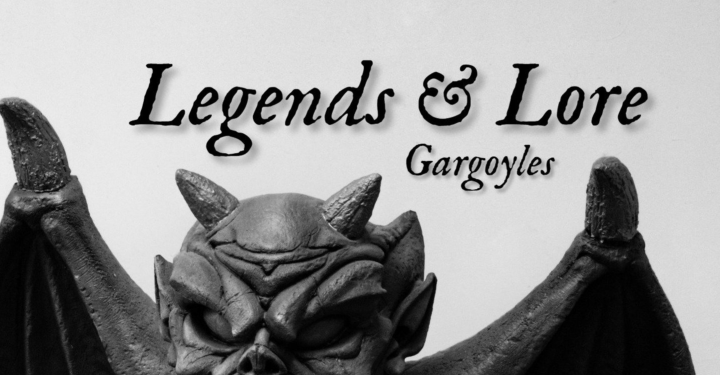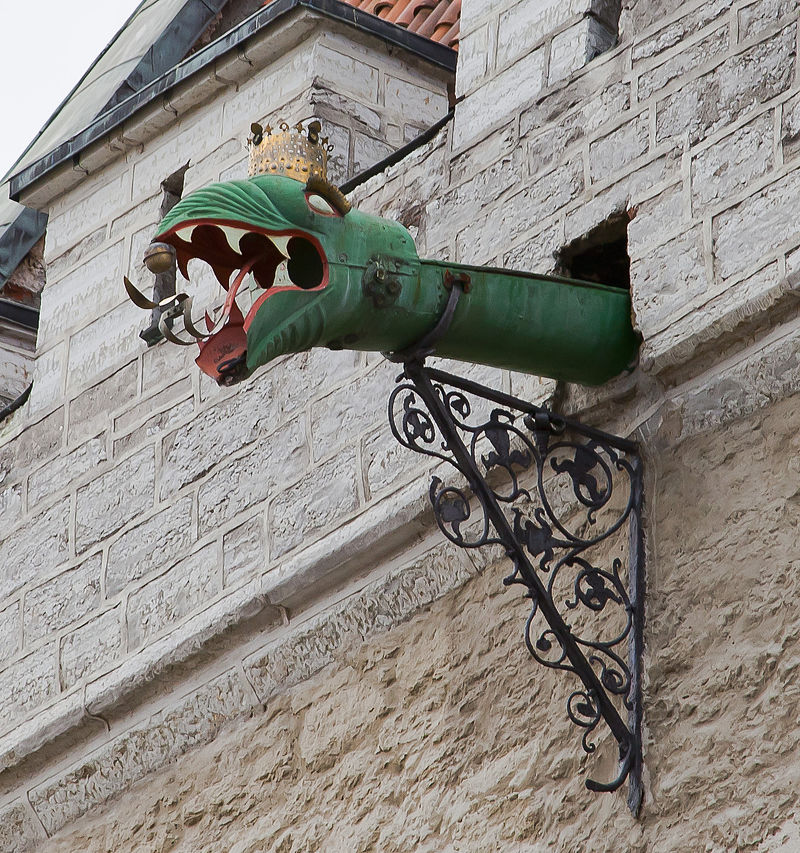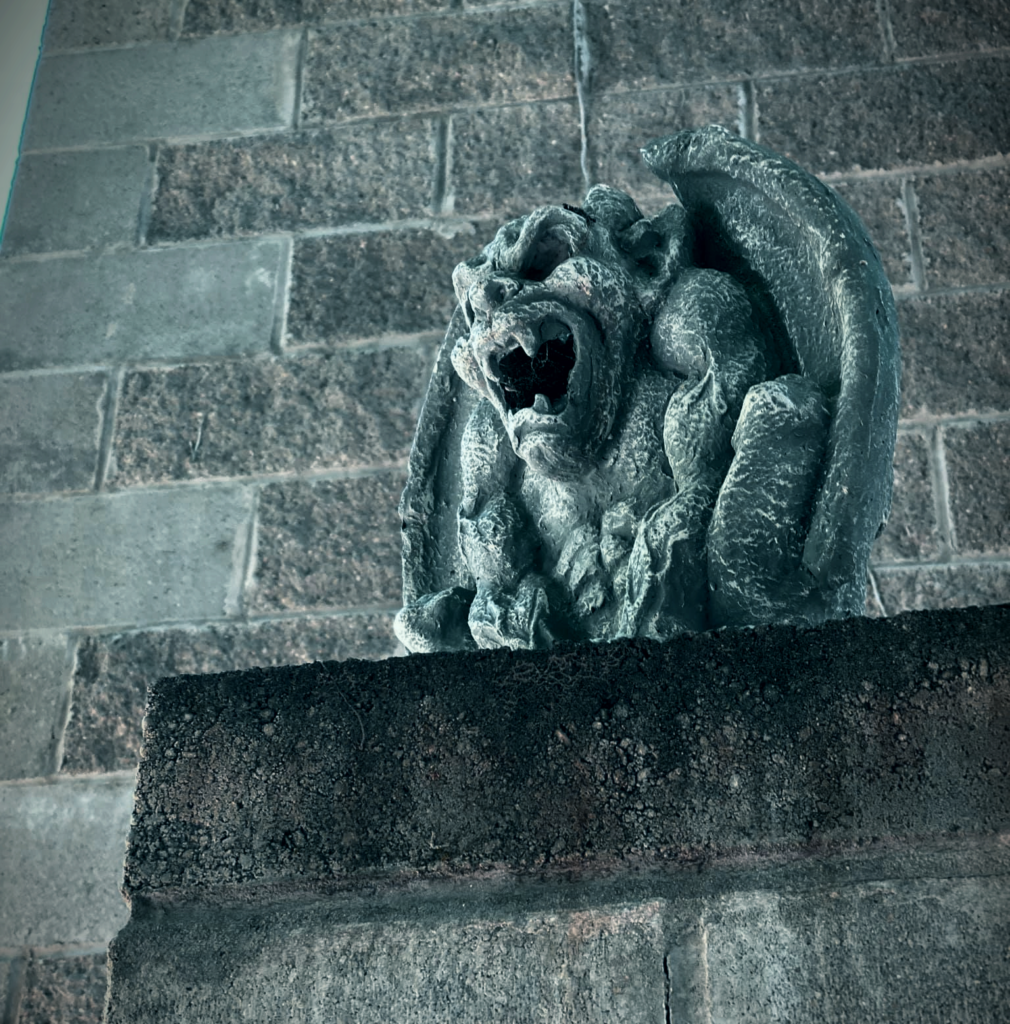
Legends & Lore: Gargoyles
When you hear the term gargoyle what’s the first thing that comes to mind? For me, it’s the Disney animated classic The Hunchback of Notre Dame. For as long as I can remember this was the first time I saw a depiction of a “gargoyle” and while Victor, Hugo, and Laverne played integral roles in Quasimodo’s life and my enjoyment of the film at a young age, I was surprised to learn later on the true functionality and purpose of a gargoyle. This week, Quoth the Raven is going to explore the history behind gargoyles while acknowledging their many adaptations throughout history!
While exploring Ravenwood, you’ll find that there are some of our own Castle guardians who watch over the guests on a day-to-day basis. When you spot these protectors, your first instinct may be to call these “gargoyles”. However, due to their design being purely ornamental, these are called grotesque or chimera. I know, I know. Feels weird, right? But to be a true gargoyle, these decorative pieces must function as original gargoyles were intended. It’s ok though, we won’t tell anyone if you still want to call them gargoyles.
A true gargoyle is formed to have a spout that will direct water away from a building in order to prevent any erosion of the structure it is mounted on. More often than not, where there is one gargoyle there will be many more. Most architects would use multiple gargoyles around the building to ensure water could be dispelled at various places around the perimeter in an effort to minimize damage that a rainstorm could bring.
The term gargoyle derives from the French word gargouille which in English means “throat”. This makes sense as many gargoyles, as depicted in the photo below, were designed to be further away from the building and oftentimes depicted elongated animals. One of the Italian words for gargoyle is gronda sporgente which in English means “protruding gutter” which again emphasizes the purpose of the gargoyle. Although different, the traditional gargoyle and the more decorative pieces that we call gargoyles do share something in common: the idea that they are guarding and protecting the space that they watch over. Below is a photo of a dragon-headed gargoyle in Estonia, one of my personal favorites that I stumbled across.

Another tidbit that I found interesting while taking a second look at how we think of gargoyles is that most of us tend to envision a more medieval and European style of architecture being home to these creatures. I was pleasantly surprised to learn that isn’t their only appearance in history! Some Greeks made gargoyles out of terra cotta. Those in Ancient Egypt however adopted a more ornate type of gargoyle and it was usually in the form of a lion’s head. These were not there specifically to help disperse water but instead protect those residing within the walls from the rains of Seth, a god associated with chaos. While it is hard to know for sure where the gargoyle originated, at this time we believe the oldest known gargoyle-like creation to be a stone crocodile in Kayseri, Turkey that was discovered in the 13th century.
Returning to the idea that we associate gargoyles with medieval times, one of the most popular places for gargoyles during that time period was the church. As most living during medieval times were illiterate, visual representations were often necessary to get a point across. Gargoyles being present on the church insinuated that they were protecting the church from the evils of the outside world and that salvation from such evils could be found within the church itself. Many churches also utilized gargoyles shaped after creatures that pagans would worship which showed that the church had its doors open for them as well. This approach made the church seem like a welcoming place for all, pagans included.
Most often we think of gargoyles as being quite frightening, which makes sense given that their purpose is to ward off evil spirits or anyone who wishes to bring harm to those it protects. However, in mainstream media we have seen some appearances of gargoyles (including my Disney reference above) that gives them a more heroic, trustworthy side. For instance, the animated TV series Gargoyles gained quite a bit of traction in the mid-90s. These gargoyles were moved to NYC from medieval Scotland and were re-awakened only to then become crimefighters in the streets of the Big Apple after the sun set. If you have Disney+ I highly recommend revisiting the show, the nostalgia is noteworthy! Even today, if you’re familiar with the fashion doll franchise Monster High, one of the characters is the daughter of gargoyles. Then again you still see the appearances of gargoyles from a more terrifying perspective. For instance, in Dungeons & Dragons a gargoyle is a winged monstrous humanoid creature, with a horned head and a stony hide. I think I’ll take the road less travelled to avoid that route!
As a fun side note for my fellow Star Wars lovers, if you’re ever in D.C., you must explore the Washington National Cathedral. There is a Darth Vader gargoyle (or if we want to be specific here, a Darth Vader grotesque). Having been part of a national contest in the 80s, the winning entry for the additional grotesque being added ended up being the Sith Lord himself! Bring a pair of binoculars, pull up this handy guide, and get hunting!
Whatever you may or may not believe about gargoyles yourself, whether you believe them to be protectors or monsters, it is always fascinating to learn more about these stories of the past. When it comes to Ravenwood, we do rest easier knowing we have some that protect our grounds and guests when nightfall encroaches. We hope that you enjoyed this week’s Legends & Lore and that you get a chance later this year to come explore Ravenwood and seek out one of our gargoyles for yourself.


 Quoth the Raven
Quoth the Raven